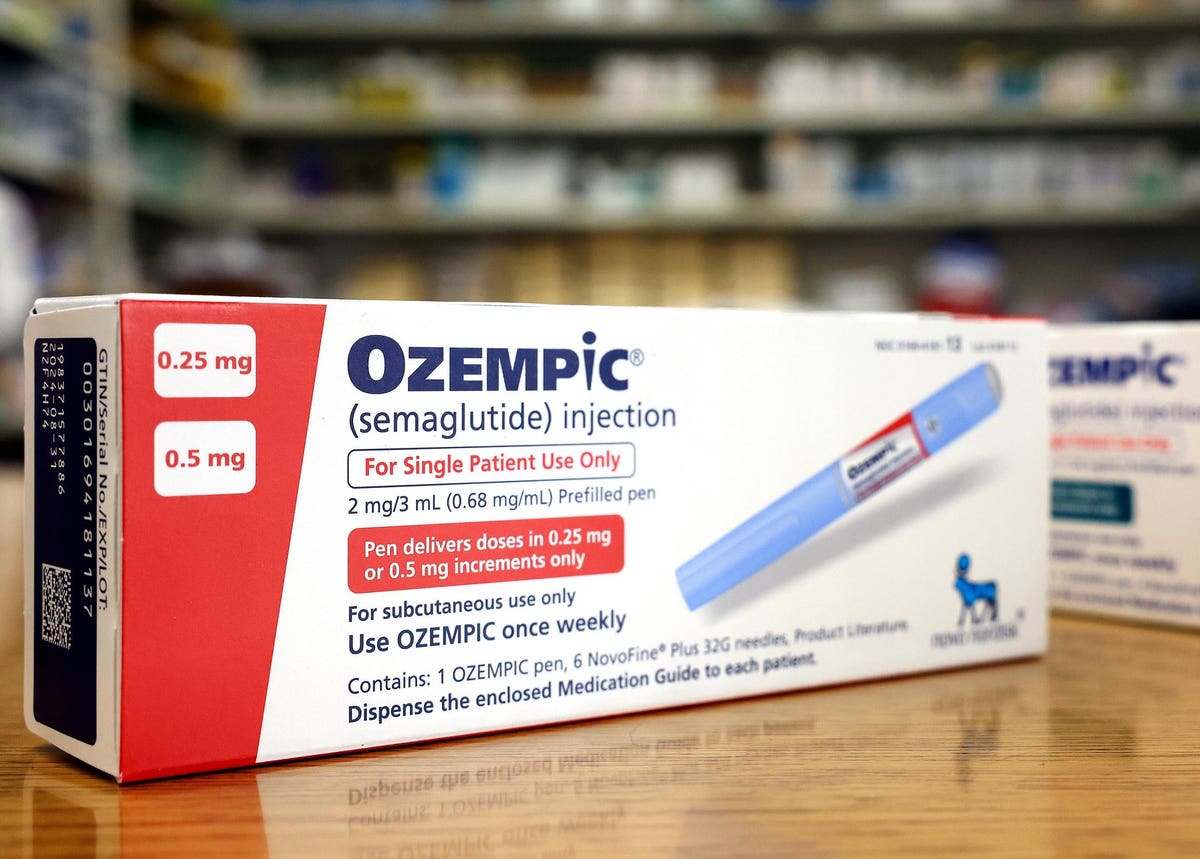In a recent STAT-Harris poll, nearly 50% of Americans say they’d be willing to spend up to $100 a month for one of the latest wave of obesity drugs, including Ozempic, Wegovy, and Mounjaro.
Some suggest this is a sign of just how much Americans want to get their hands on the new weight-loss drugs. Undoubtedly, the off-label uses of Ozempic and Mounjaro and the on-label use of Wegovy are popular. Repurposed semaglutide, liraglutide and tirzepatide are much more effective than the older generation obesity drugs. Additionally, Eli Lilly’s experimental weight-loss drug retatrutide may eventually set a new bar, as it has helped obese patients in a Phase 2 study lose 24% of their body weight after 12 months of treatment.
But the typical American’s willingness to pay amount for these drugs appears to be quite low in relation to the actual list prices. For the weight loss agents mentioned, list prices range from around $900 to $1,600 per month, which is well above what the vast majority of people are willing to pay, according to the poll. And, most people’s willingness to pay `price’ is even below what patient co-insurance generally is if they’re lucky enough to have commercial coverage of one or more of the drugs. Here, co-insurance denotes a percentage of the list price, typically anywhere between 10% and 25%, that an insured patient must pay out-of-pocket for a drug. While 84% of respondents believe their insurance should cover the drugs, thus far only around a third of insurers offer coverage.
On a scale of out-of-pocket amounts from $100 to more than $1,000 a month, as we approach the actual prices of these drugs at the pharmacy counter for those without coverage and even many who are covered, a dwindling number of respondents expressed willingness to shell out more cash. Twenty-five percent said they’d pay $250 a month and 17% responded that they’d be okay with paying $500 out-of-pocket on a monthly basis. Only five percent said they’d be willing to spend more than $1,000 a month. Well, if that’s the case, then without coverage—and most insurers in the commercial and public markets don’t cover the products—$1,000 a month or more is what folks will have to pay.
Also, the poll implicitly revealed a falsely optimistic view on the long-term efficacy of these drugs. The 47% of respondents who said they would be willing to spend $100 out-of-pocket would do so until they’d reached a goal. This suggests a misunderstanding about how the drugs work. Studies indicate people must take them chronically to ensure keeping the weight off, which means spending a certain monthly amount indefinitely.
In the commercial market, patient assistance programs offered by drug makers can help defray a portion of eligible patients’ co-insurance or co-payments. But for many patients payer “co-pay maximizers” may de facto nullify the amount they receive. Co-pay maximizers are schemes designed by payers in which a manufacturer’s payment assistance does not count toward a patient’s deductible and out-of-pocket maximum.
Moreover, patient assistance programs are prohibited in public programs such as Medicare. Advocacy groups and the pharmaceutical industry are pushing for Congress to pass the Treat and Reduce Obesity Act, which would expand anti-obesity medication coverage for Medicare beneficiaries. However, even if Medicare lifts the prohibition on coverage of obesity drugs, it does not imply that such medication will be automatically covered. In fact, if what we’re observing in the commercial market holds, it’s likely a fairly large percentage of Medicare Part D plans would balk at covering obesity drugs, as it would still be up to individual pharmacy benefit managers and insurers to decide on coverage. Also, payers would in all likelihood impose a variety of conditions of reimbursement, including relatively high patient cost-sharing, extensive use of prior authorization protocols, quantity limits, and step edits.
Medicaid coverage of anti-obesity drugs varies by state, with only a handful of states offering reimbursement. States do have the option to cover weight loss medications, but are not required to do so.
Weight loss drugs still aren’t cost-effective
What isn’t yet in the drugs’ favor with payers is the apparent lack of cost-effectiveness.
On June 6th, for example, the U.K.’s National Institute for Health and Clinical Excellence (NICE) declined to recommend Mounjaro (tirzepatide). The agency says it’s “yet to be established if Mounjaro represents good value for money, alongside diet and exercise, for adults with type 2 diabetes and a high body mass index.”
It’s decisions like these that represent one of many reasons why obesity drugs will struggle to gain traction in the U.K. and Europe.
In the U.S., the health technology assessment body, the Institute for Clinical and Economic Review, did not find semaglutide options—which include both Ozempic and—cost-effective for obesity. Reductions of 30-50% in price for semaglutide treatments would be needed to make them cost-effective.
As part of a clinical- and cost-effectiveness assessment analysts also account for side effect profiles, which can be debilitating for some, as well as the possibility of long-term serious adverse events for a small subset of patients. Possible negative effects of chronic usage are being examined. These are unknown at this time but are being investigated by, among others, the European Medicines Agency.
Then there is the potential for significant financial exposure for payers if they reimburse for a substantial proportion of eligible patients. Consider that more than 40% of adults in the U.S. are obese, which the Centers for Disease Control and Prevention define as a body mass index of 30 or higher.
At the same time, obesity is linked with heart disease, stroke, type 2 diabetes and certain types of cancer. Indeed, the indirect impact of weight loss medicines on cardiovascular outcomes is being studied. The preliminary data suggest positive benefits. If there is more robust evidence that emerges by next year this could alter the cost-effectiveness profile favorably for the the obesity drugs.
While the new classes of obesity drugs are more effective than previous generations, they’re not yet considered cost-effective. As a result, many payers may continue to balk at reimbursing until a firmer cost-effectiveness evidence base is established. Additionally, there appear to be limits to what most Americans are willing to spend out-of-pocket on the new wave of obesity drugs.
Read the full article here




